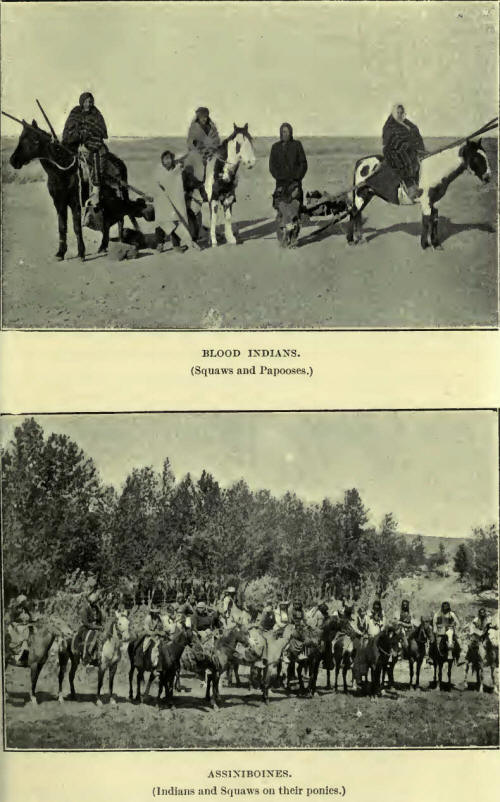Integrating Hudson's Bay Artifacts Into Manitoba's Historical Holdings

Table of Contents
The Significance of Hudson's Bay Company Artifacts in Manitoba's History
The Hudson's Bay Company's impact on Manitoba's development is profound and multifaceted. For centuries, the HBC dominated the fur trade, establishing trading posts that became the nuclei of future settlements. This period profoundly shaped relations between Indigenous peoples and European newcomers, leaving behind a complex legacy reflected in surviving artifacts. Understanding this legacy requires careful consideration of Indigenous history and colonial history, both intrinsically linked to the HBC's activities in Manitoba.
These artifacts offer invaluable insights into various aspects of Manitoba's past:
- Fur Trade Implements: Tools used in trapping, processing, and trading furs – such as snares, axes, and scales – provide direct evidence of the economic engine that drove early Manitoba.
- Indigenous-made Goods: Artifacts traded or acquired by the HBC, including clothing, weaponry, and ceremonial objects, offer glimpses into Indigenous cultures and their interaction with the fur trade.
- Company Records: Letters, ledgers, and maps provide crucial documentation of the HBC's operations, land claims, and relations with Indigenous communities. These archival materials are essential for historical research and understanding the complexities of the fur trade era.
- Early Settlement Artifacts: Items from the burgeoning settlements that emerged around HBC trading posts, such as household goods, tools, and clothing, paint a picture of daily life in nascent Manitoba.
These artifacts, representing diverse facets of Manitoba heritage, collectively tell a story of transformative change and enduring cultural influence.
Current Status of HBC Artifacts in Manitoba
Currently, HBC artifacts in Manitoba are scattered across various institutions, including:
- Provincial Archives of Manitoba: Holds a significant collection of HBC documents and records.
- Manitoba Museum: Houses a selection of artifacts related to the fur trade and early settlement.
- Various Regional Museums: Smaller museums across the province often possess localized collections related to HBC activity in their areas.
- Private Collections: Numerous private individuals and families possess HBC artifacts, often passed down through generations.
This fragmented distribution poses significant challenges:
- Limited Accessibility: Researchers and the public face difficulties accessing a comprehensive overview of HBC artifacts due to their dispersed nature.
- Uneven Preservation: Varying standards of preservation across different institutions risk the deterioration of these invaluable items. Artifact preservation requires consistent, high-quality care and resources.
- Lack of Digitization: Many artifacts remain undocumented and inaccessible in digital formats, hindering research and broader public engagement. The creation of a robust digital archives system is essential.
- Inadequate Funding: Insufficient funding often hinders proper preservation efforts and the development of comprehensive cataloging systems.
Strategies for Integrating HBC Artifacts into Provincial Holdings
A unified provincial system for managing HBC artifacts offers numerous advantages:
- Improved Preservation: Centralized storage and management would ensure consistent, high-quality preservation practices, utilizing best-practice archival management techniques.
- Enhanced Research Opportunities: A consolidated collection would facilitate research and provide scholars with unprecedented access to comprehensive information on Manitoba's history.
- Greater Public Access: Through digitization and improved cataloging, a wider audience could access and engage with Manitoba’s rich past, including through museum collections.
- Cost-Effective Management: Consolidation could lead to efficiencies in resource allocation, making collection management more effective and sustainable.
This integration requires a collaborative approach, involving:
- Provincial Government: Providing leadership and funding for the initiative.
- Museums and Archives: Contributing their existing collections and expertise.
- Indigenous Communities: Working collaboratively to ensure respectful representation and engagement with their cultural heritage.
- Hudson's Bay Company: Potentially partnering in the project, contributing to the preservation of its own legacy. Their input is vital for a holistic approach to Manitoba heritage.
Specific recommendations include:
- Developing a comprehensive inventory of all HBC artifacts in Manitoba.
- Implementing standardized preservation and cataloging practices across all institutions.
- Investing in the digitization and online accessibility of the collection.
- Creating educational resources and public programs to engage communities with Manitoba's history.
The Role of Indigenous Perspectives in Preserving HBC Artifacts
The integration of HBC artifacts must prioritize the perspectives and knowledge of Indigenous communities. The fur trade profoundly impacted Indigenous peoples, shaping their cultures and livelihoods. Respectful representation requires acknowledging this complex history and actively engaging with Indigenous communities. Ethical collecting principles must guide every step of the process. This includes:
- Collaborative Curation: Working with Indigenous communities to curate exhibitions and interpret artifacts in ways that reflect their knowledge and perspectives. This ensures cultural sensitivity and promotes reconciliation.
- Repatriation: Considering the repatriation of artifacts that hold significant cultural or spiritual importance to Indigenous communities.
- Language Revitalization: Incorporating Indigenous languages into exhibition materials and educational programs.
- Community Engagement: Involving Indigenous communities in all stages of the project, from planning to implementation to ongoing management.
Successful collaborative projects demonstrate the power of this approach: By actively partnering with Indigenous communities, we can ensure that Hudson's Bay Company artifacts are not just preserved but also interpreted in a way that honors the diverse histories they represent.
Securing Manitoba's Shared Heritage: A Call to Action for Integrating Hudson's Bay Artifacts
Integrating HBC artifacts into a unified provincial system is vital for preserving Manitoba's shared heritage. This initiative will significantly enhance research opportunities, improve public access, and ensure the long-term protection of these invaluable pieces of our past. Improved historical preservation through provincial archives and museum collections will secure Manitoba heritage for future generations.
We urge readers to support initiatives that promote the preservation and integration of these artifacts. Contact your local representatives, support relevant museums and archives, and advocate for increased funding for heritage preservation programs. By working together, we can secure the Hudson's Bay Company legacy in Manitoba and ensure its enduring significance for years to come. The rich tapestry of Manitoba history depends on it.

Featured Posts
-
 Dzilijan Anderson Novo Lice Zenstvenosti U Retro Stilu
May 01, 2025
Dzilijan Anderson Novo Lice Zenstvenosti U Retro Stilu
May 01, 2025 -
 Papa Francesco Difende Il Cardinale Becciu Le Dimissioni Non Sono All Ordine Del Giorno
May 01, 2025
Papa Francesco Difende Il Cardinale Becciu Le Dimissioni Non Sono All Ordine Del Giorno
May 01, 2025 -
 Bartlett Fire Leaves Two Structures As Total Losses Under Red Flag Warning
May 01, 2025
Bartlett Fire Leaves Two Structures As Total Losses Under Red Flag Warning
May 01, 2025 -
 Watch Out Fake Steven Bartlett Videos Could Cost You Thousands
May 01, 2025
Watch Out Fake Steven Bartlett Videos Could Cost You Thousands
May 01, 2025 -
 New Channel 4 Drama Trespasses Teaser Images Revealed
May 01, 2025
New Channel 4 Drama Trespasses Teaser Images Revealed
May 01, 2025
